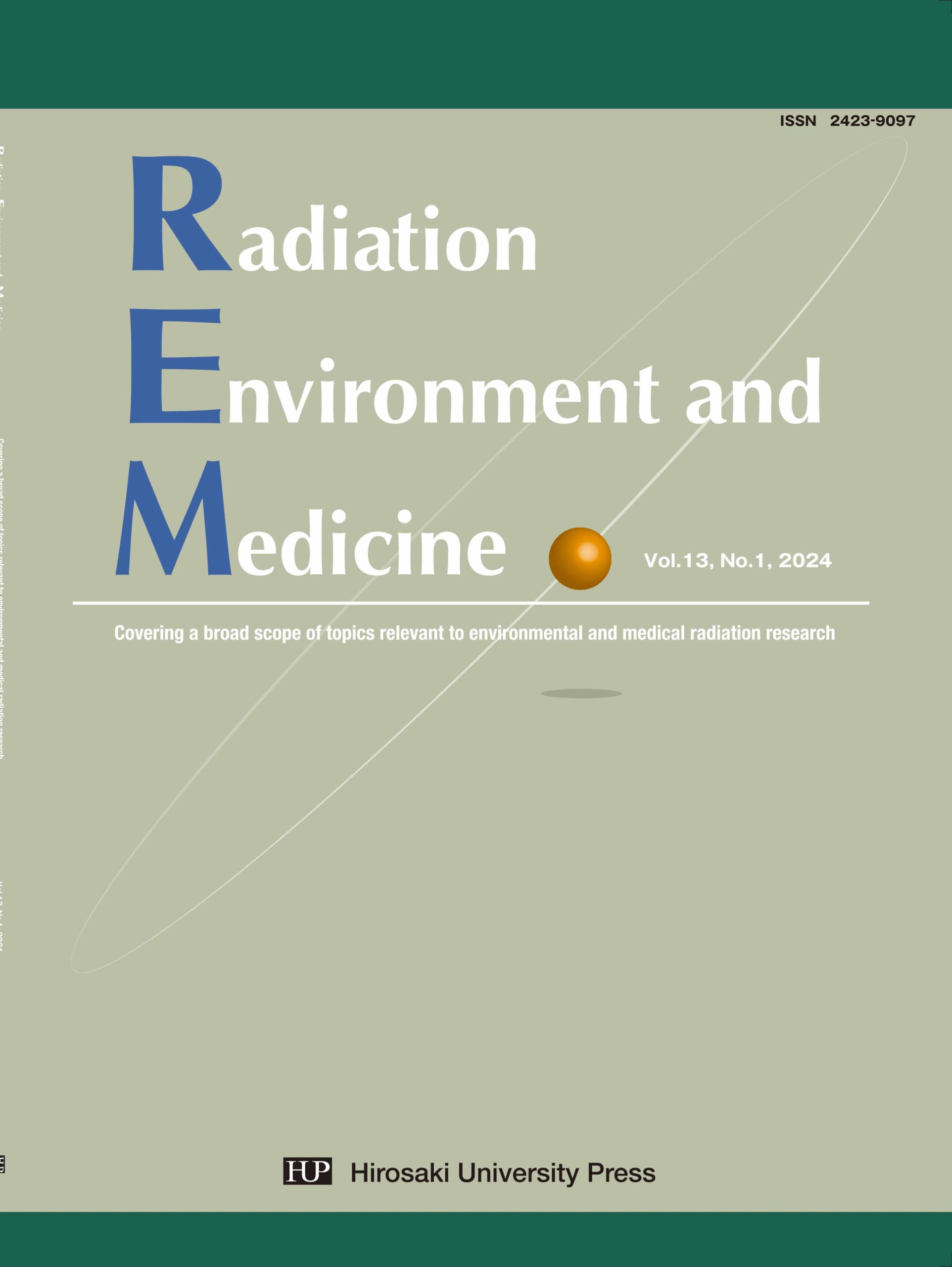Special issue
Cytogenetic Biodosimetry in
Radiation Emergency Medicine
Click here for more details »
Information
- 2024.03.12
- Radiation Environment and Medicine Vol.13, No.1 has been posted
- 2023.09.06
- Radiation Environment and Medicine Vol.12, No.2 has been posted
- 2023.03.06
- Radiation Environment and Medicine Vol.12, No.1 has been posted
- 2022.09.07
- Radiation Environment and Medicine Vol.11 No.2 has been posted
- 2022.03.02
- Radiation Environment and Medicine Vol.11, No.1 has been posted
Aims and Scope
Radiation Environment and Medicine (REM) is an international peer-reviewed journal published in print and online (open access) semiannually by the Hirosaki University Press. The REM publishes high-quality scientific articles on all aspects related to radiation environment and medicine. These include epidemiological study, biological effect, dose assessment, education, radiochemical analysis, radiation nursing, health physics, radiation measurement, and clinical activities, but not limited to them. Experimental and theoretical reports are also accepted.
In 2010, Hirosaki University initiated a program, the “Educational Program for Professionals in Radiation Emergency Medicine”. To contribute to progress in radiation emergency medicine worldwide, Hirosaki University determined to publish an academic journal. Then since 2012, Hirosaki University has issued Radiation Emergency Medicine. And in view of the current situation, the editorial board elected to change the journal name to Radiation Environment and Medicine. Since 2016, it has been issued as the continuation of Radiation Emergency Medicine.



